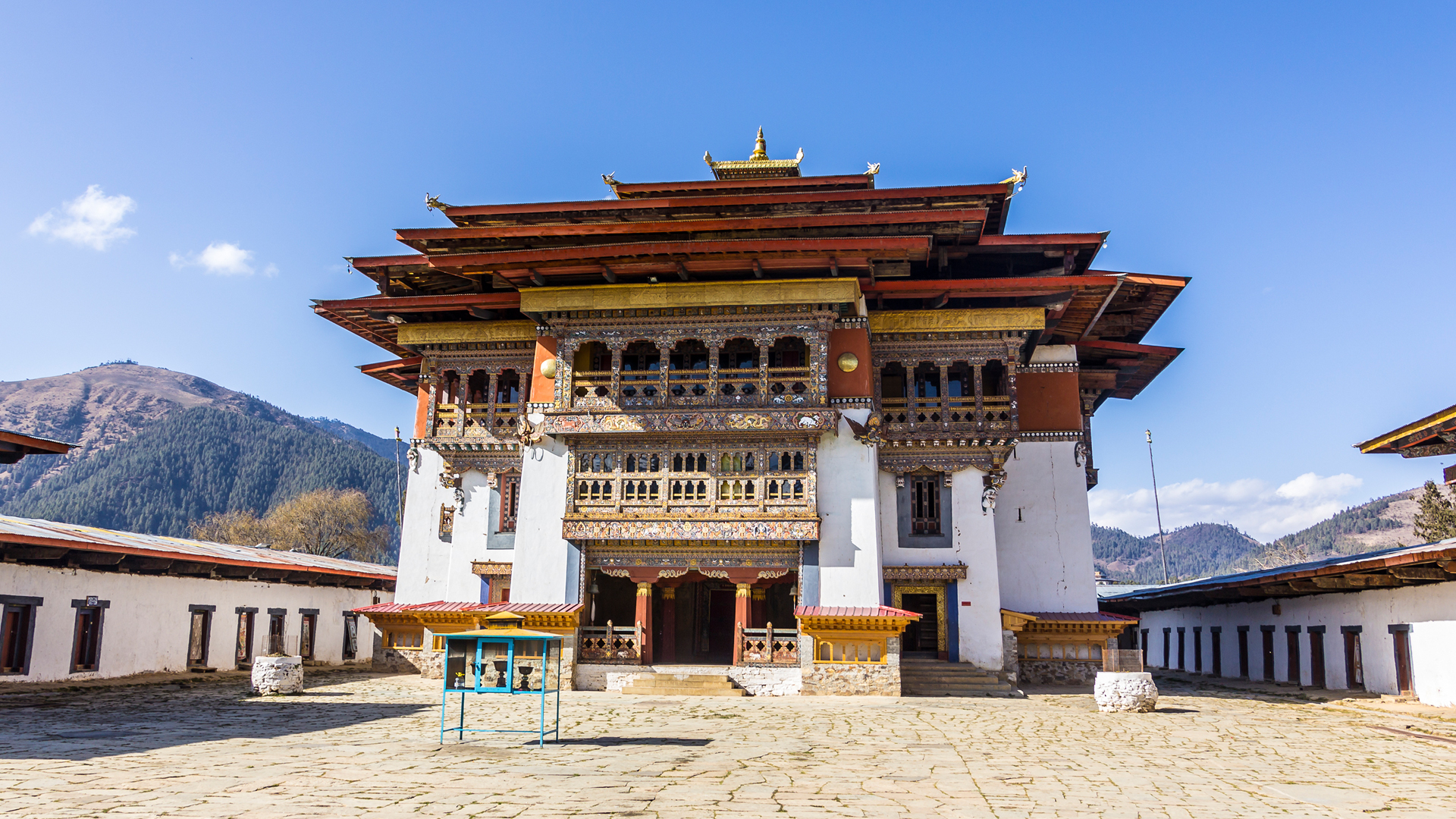
Gangtey Monastery

Gangtey monastery, is a prominent and historic Buddhist monastery located in the Phobjikha Valley of Bhutan. Established in 1613 by the Penlop (governor) of Wangdue Phodrang, Shabdrung Ngawang Namgyal, the monastery is an important center of the Nyingma school of Tibetan Buddhism. Renowned for its impressive traditional Bhutanese architecture, Gangtey Monastery features ornate woodwork and intricate murals that illustrate Buddhist teachings and deities. Set amidst the breathtaking beauty of the Phobjikha Valley, the monastery not only serves as a spiritual retreat for monks and visitors but also plays a significant role in local cultural and religious practices. It is especially known for its annual festival, the Black-Necked Crane Festival, which celebrates the arrival of the endangered black-necked cranes to the valley and promotes conservation efforts. The monastery’s serene environment and historical significance make it a key landmark in Bhutan’s spiritual and cultural landscape.
Here is a point-wise summary of Gangtey Monastery:
- Location: Situated in the Phobjikha Valley of Bhutan.
- Establishment: Founded in 1613 by Shabdrung Ngawang Namgyal, the Penlop (governor) of Wangdue Phodrang.
- Affiliation: Associated with the Nyingma school of Tibetan Buddhism.
- Architectural Style: Features traditional Bhutanese architecture, including ornate wood carvings and intricate murals.
- Cultural Significance: Serves as a major spiritual and cultural center for the local community.
- Annual Festival: Hosts the Black-Necked Crane Festival, celebrating the arrival of the endangered black-necked cranes and promoting conservation.
- Role: Functions as a center for meditation, religious ceremonies, and spiritual learning.
- Scenic Setting: Located amidst the picturesque Phobjikha Valley, known for its natural beauty and serene environment.
- Visitor Experience: Offers insights into Bhutanese Buddhist traditions and the region’s cultural heritage.
- Conservation Efforts: Plays a role in raising awareness about the protection of the black-necked crane and the valley’s ecological balance.
Related
- Adha and Rukha Village
- Bajo Town
- Black-Necked Crane Center
- Gangtey Monastery
- Gaselo and Nahee Village
- Khewang Lhakhang
- Khotokha Village
- Kumbu Lhakhang
- Pelela Pass
- Phobjikha Valley
- Punatshangchu
- Rada lhakhang
- Rinchengang Village
- Samtengang Village
- The Wind Farm Rubesa
Need Assistance?
Call Us : +975-17351324
+975-17495729
Email Us : adbhutantours@gmail.com
Send your Queries
